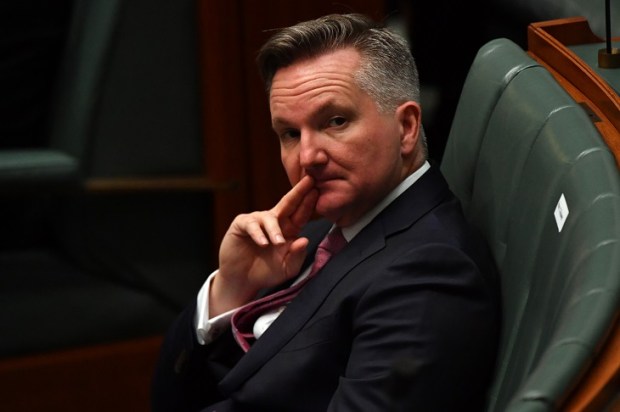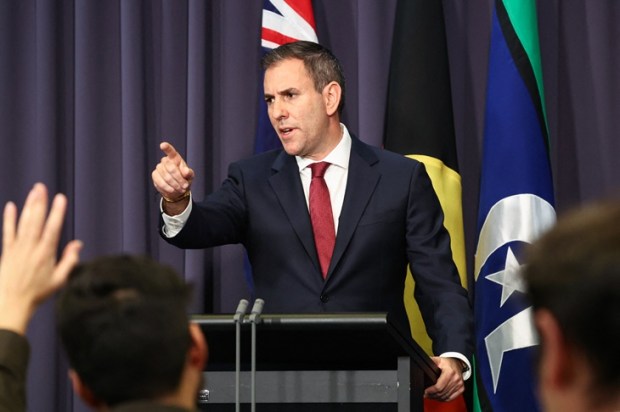In the aftermath of the capitulation of the Liberals, it will be amusing in a macabre kind of way to see the accelerated efforts of the government to get rid of coal just when the tide is turning in the opposite direction practically everywhere else in the world. The major exceptions are Britain and Germany which are the very worst advertisement for the Net Zero program.
All discussion of energy policy needs to start with the clear-eyed recognition that trillions of dollars spent over some decades have delivered more expensive and less reliable power with massive damage to the forests and farmlands. Still, the momentum of The Net Zero Titanic will ensure that it continues on course for the icebergs for some time yet.
The government is committed to the target of 82 per cent renewable energy in the power supply by 2030 and this will inevitably increase the risk of blackouts.
Two kinds of grid failure are now apparent, both caused by the subsidies and mandates for unreliable energy that drive the reliable providers out of the market.
One kind occurred in Texas in February 2021 when the combination of diminished conventional capacity, low wind at night, the inadequately winterised gas system, and freakishly cold weather brought the grid within four minutes and some seconds of going completely black across the state. As it was, hundreds died and it would have been thousands or even millions in the worst case.
The other type of failure is suspected to have occurred (although no definitive answer has been given) in Spain where there is not enough grid inertia (usually provided by the massive rotating turbines of conventional providers) to protect the grid from the risk of cascading failure triggered by fluctuating inputs of wind and solar power.
Anton Lang recently quantified the sudden fluctuations of wind power in the NEM to reveal falls up to 4.3GW in just 2.5 hours. That is equivalent to all the coal power in Victoria going out in that time!
The topic of grid inertia calls for more discussion but the immediate concern for Australia is the threat of wind droughts when there is next to no wind across the whole of the grid for several days and nights.
Expectations for the energy transition should collapse like a punctured balloon when there is widespread awareness of the number of times when breakfast and dinner would have to be served cold without coal power in the grid to provide heat. And also light and all of the other things like trains, traffic lights, coffee shops, and lifts that you might encounter on the way to your unlit office, where the computers are not working.
People are advised to regularly check the NemWatch widget at sunrise and sunset to see how much green (wind) you can find alongside the black and brown (coal) on the bars representing the power supply in each state.
See the picture on a low-wind morning shown in this piece on the parallel universes in the energy debate.
Imagine, if you dare, the multiples of the current number of windmills that would be required to turn the black and brown into green in that picture!
A significant lift in wind literacy will be a big step in the right direction to make the voting public aware of the fragility of the wind and solar supply. Everyone knows the sun is off duty at night, but few know that the wind is sometimes almost completely off duty as well. It does not help to talk about the average capacity factor of the windmills, which is near 30 per cent, because that just prompts the rejoinder that we can overbuild to compensate.
Moreover, everyone knows that the wind comes and goes but we need to be constantly reminded about low wind periods that we don’t notice in the normal course of events.
The constant reminder could be provided by radio and TV weather reports if they include the contribution of wind and solar power to the grid at the time. During the day everything looks rosy, especially in the afternoon when the solar input peaks but the crunch comes before dinnertime when the sun fades rapidly.
The renewable energy supply is not likely to be included in weather reports anytime soon because too many people don’t want the masses to know what they need to know about wind droughts. That includes the journalists and commentators who have been ignoring the briefing notes and updates circulated to politicians and journalists by The Energy Realists since 2020.
Maybe President Trump will issue an executive order requiring news channels to include the wind and solar input along with the temperature and the other standard items. With a parallel public education program to explain the significance of low wind periods, support for the wind and solar transmission could decline dramatically in the United States.
That could flow into the climate debate that will fire up as President Trump pursues his mission to take down the twin empires of the Climate Science Fraud and the Net Zero Ponzi.

























